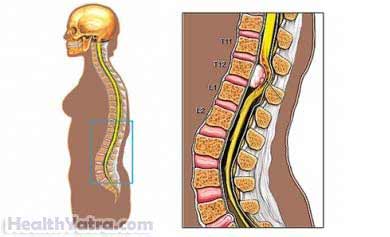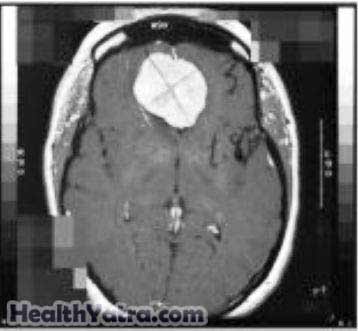Definition
The meninges are a protective lining around the brain and spinal cord. A meningioma is a tumor of these linings. Most meningiomas do not cause symptoms. But, if the meningioma grows, it can push on important parts of the brain. These tumors may be grade I, II, or III.
Grade III is the most aggressive type. Malignant meningiomas, also called anaplastic, are less common. These tumors are faster growing. They often cause problems and some can cause some swelling in the brain.

Causes
The exact cause of meningiomas is unknown. Factors that may be associated with these tumors include:
- Genetic predisposition
- Certain hormones
Risk Factors
Factors that may increase the risk of meningioma include:
- Sex: twice as common in women than men
- Age: 40-70
- History of breast cancer or sarcoma, as part of the Li-Fraumeni syndrome
- A diagnosis of neurofibromatosis type 2 (NF2)
- Radiation exposure, especially to the head
Symptoms
Symptoms of meningioma are usually related to the area of the brain that is affected. Symptoms can also be due to an increase in the pressure inside the skull. Symptoms may include:
- Headaches
- Vomiting
- Visual problems
- Changes in behavior
- Seizures
- Pain
- Loss of sensation or weakness in the arms and legs
- Loss of bladder or bowel control
- Slurred speech
- Language deficits
- Difficulty with learned movements
- Loss of coordination
- Difficulty writing
- Intellectual difficulty
Diagnosis
Your doctor will ask about your symptoms and medical history. A physical exam will be done. You will have a neurologic examination.
Images of your head may need to be viewed. This can be done with:
- CT scan
- MRI scan
- Angiogram
Your brain activity may need to be measured. This can be done with an electroencephalogram (EEG).

Treatment
Treatment will depend on the size and location of the tumor, its rate of growth, and your general health. The main types of treatment for meningiomas are:
Surgery
Surgery may be recommended if the tumor is located in an area that is easily reached. Most surgeries can be done without causing neurologic damage.
Embolization
Tumors need blood flow to survive. In some instances, prior to surgery, a catheter may be inserted into blood vessels supplying the tumor. It will disrupt the flow of blood to the tumor. This will make the tumor shrink. The smaller tumor can then be removed with surgery.
Radiation Therapy
Radiation therapy is used either on its own or after surgery has been done.
Some tumors may be located in an area that is difficult or too dangerous to operate on. Radiation may be used on its own if the tumor is causing symptoms and cannot be removed with surgery. Radiation therapy is an effective way of treating the tumor and stopping its growth.
If the tumor is a higher grade, radiation is generally considered. In this case, radiation may be given either on its own or after surgery to help prevent the tumor from coming back.
Your radiation oncologist will describe how the therapy is delivered and how many treatments are needed. You may receive 25-40 treatments on a daily basis, or fewer treatments if you are having stereotactic radiosurgery. This type of surgery delivers higher doses of radiation during each treatment.
Chemotherapy
Chemotherapy is used only after other treatment methods have failed. Your oncologist will discuss the options and choice of medications.
Prevention
There are no guidelines for the prevention of meningiomas.
